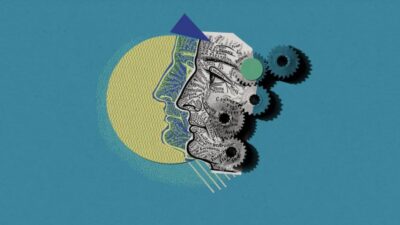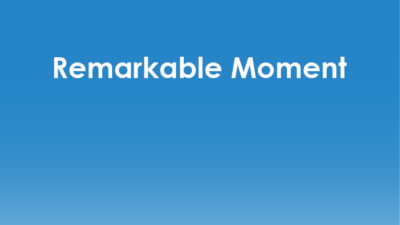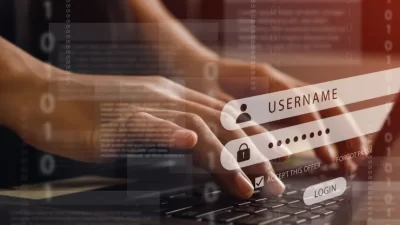Businesses today are acknowledging that culture is an important piece in driving business outcomes. It’s not just the icing on the cake; it’s one of the key ingredients. This is why “Chief Culture Officer” is an executive position at large companies like Google, WikiMedia, and Zappos. There has also been a shift in commonly used language around leadership in general. Phrases like “lead like a gardener”, “hold the space”, and “set the environment” now describe the role of all leaders, not just those with “Culture” in their formal title. If you’re in a leadership position, it’s part of your responsibility to keep an eye on and (when necessary) change culture.
The tricky part is that while it’s clear that culture is important, culture itself and how to change it is still murky. It often feels like something separate from day to day operations. It’s elusive, like the energy in a room. How do you change something like that?
While it’s true that culture is elusive, it’s also true that culture is a series of habits – habits at the individual, team, and organizational level. And habits can be observed, understood, and shifted. A company’s culture is its value of “integrity” and story of a larger-than-life founder just as much as its norm of giving credit to a team member. Culture is both mythical and mundane (to borrow a phrase from Gayle Karen Young). It is elusive and concrete.
When changing culture, the key is to focus on tactics that translate the elusive into the concrete. Don’t get lost in shaping the mythical elements. You can tinker with your list of cultural values all day, but that perfect wording doesn’t mean squat if people don’t know how to live it.
If you look at culture change as a series of successful habit shifts, the process of making it a reality starts to feel more achievable. The impact of one small change across every team in your organization means hundreds or thousands of interactions shifting to align with the culture you want. It’s not simple, but there are practical approaches you can take to move the needle.
1. Understand how habits work
Understanding the components of habits will help you understand 1. why the behavior you see in your organization emerges 2. what reinforces it and 3. how you can change elements in the environment to shift it.
Habits are made up of three parts: trigger, routine, reward. A trigger is something that prompts a certain action or reaction. It could be an event, a feeling, an object etc. A routine is a series of actions or emotions. A reward is something that reinforces the routine.
Let’s look at a simple example:
- Your alarm clock goes off (trigger).
- You hit snooze (routine).
- You get ten extra, beautiful minutes of sleep (reward).
An example in your organization might be:
- A big decision needs to be made (trigger).
- You politic and have a series of side-conversations (routine).
- You avoid any uncomfortable, public discussions (reward).
This loop of trigger, routine, reward happens constantly for you, your team, and your organization. When you understand these loops you will see how undesirable interactions are rewarded or reinforced — by you and others — and what barriers exist for good ones.
2. Identify a few key, widespread habits that need to change.
To jumpstart cultural change, pick a few habits to tackle first. What are some of the most widespread tendencies that are holding your organization back? When you reflect on your frustration, where does it start?
Focus on habits that are specific, exist broadly. Choosing a specific habit will help you design targeted, deliberate solutions. Choosing a habit that exists broadly will help you achieve a visible win for a large audience.
A visible, concrete shift will achieve two main things. First, it’ll show that culture change doesn’t exist only in speeches given by leaders. Second, it will help people understand what the culture change looks and feels like. It creates an opportunity for people to engage with an otherwise intangible thing.
For example, if you want to create a culture of empowerment in your organization two good habits to tackle would be 1. employees’ tendency to go to leaders every time they need to make a big decision and 2. leaders’ willingness to supply an answer. They are specific to empowerment, apply across teams, and would add up to a large cumulative impact.
3. Break those habits down into their trigger, routine, and reward.
Once you’ve identified a few key habits, identify their parts. When broken down this way, it is much easier to see why behaviors persist even if leaders or team members verbally disapprove of them. If you can understand the incentives for bad habits, you have a shot at rooting them out.
Consider these questions:
- To identify the trigger: What is prompting the behavior? What are people reacting to?
- The routine: What does their reaction consist of? What behavior or emotions emerge?
- The reward: What benefit are people getting from it? Why do they keep doing it?
Let’s answer these questions in relation to the two habits described above.
Employee habit loop
- Trigger: big decision, feelings of anxiety and uncertainty
- Routine: ask leader for opinion
- Reward: receive concrete answer, decreased anxiety, increased certainty
Leader habit loop
- Trigger: employee asks for opinion, feeling of being needed, frustration of being asked
- Routine: gives opinion and reminder of empowerment
- Reward: saved time (compared to taking time to coach employee), reinforced sense of value to team, sense of promoting empowerment
4. Identify the root cause of the current routine.
If you want people to engage in a new routine, you have to make sure the right conditions are in place for them to do so. Before you can set the right conditions, you need to understand why a particular pattern is emerging.
Habits occur because of a particular combination of individual and environmental factors. Trying to change one without the other is a common and fatal mistake.
Consider these questions:
- What about the environment is pushing people toward that routine?
- What skills, training, or information do people lack that lead to the habit?
The answers to these questions should drive how you try to break the current habit. Let’s look at how this plays out with our habit loops from above.
Why does a big decision cause anxiety and prompt employees to go to leaders? Some possible answers:
- Employees don’t have the information needed to effectively make the decision
- Employees don’t believe leaders are okay with them making the decision without close oversight
- Employees have the information but not the competence to make the decision
Why do leaders continue to make decisions for employees despite their desire for employees to make their own decisions?
- They are thinking short-term and don’t understand they are reinforcing reliance on them.
- They don’t have the skills to coach employees.
- They don’t trust employees’ ability to make decisions.
- They don’t have the time to coach employees to make their own decisions.
Each of these causes would need a different type of change to get rid of the routine that it is causing.
5. Set conditions for people to use an alternative routine.
The easiest way to change a habit is to keep the same trigger and reward, but insert a new routine. You can enable this shift for people by making systematic, organization-wide changes that address the root cause of a bad routine. These changes can come in the form of information, tools, and/or support.
Let’s continue with our example to show what this might look like.
Employee habit loop
Trigger: big decision, anxiety, uncertainty
Resources for Alternative Routines:
- standardized decision-making process & training (to improve competence)
- defined decision rights to clarify ownership of decision and make trust from leader explicit
- centralized knowledge management tool to provide necessary information
- channel-based communication tool to get advice from peers
Reward: anxiety decreases, certainty goes up
Leader habit loop
Trigger: employee asks for opinion, feeling of being needed, frustration of being asked
Resources for Alternative Routines:
- training on how to coach employees
- decision-making process to improve trust in employee competence
- knowledge management tool to redirect employee when asking for context
Reward: saved time, reinforced sense of value to team through coaching
6. Listen to feedback.
Habits don’t always emerge or change as you expect, especially in a large system. Make sure you look for and listen to feedback as you make systemic changes. If something isn’t taking hold as you expect ask yourself the following questions:
- Have we communicated that this change is expected of them?
- Have we explained why it’s important? The bigger picture this habit change is a part of?
- Have we given people the training and resources to do it?
- Is the time requirement reasonable? Do they have the time to do it?
Using a systematic approach to change small habits can promote huge changes across an organization. What habits can you break on your team?
Source: https://medium.com/





